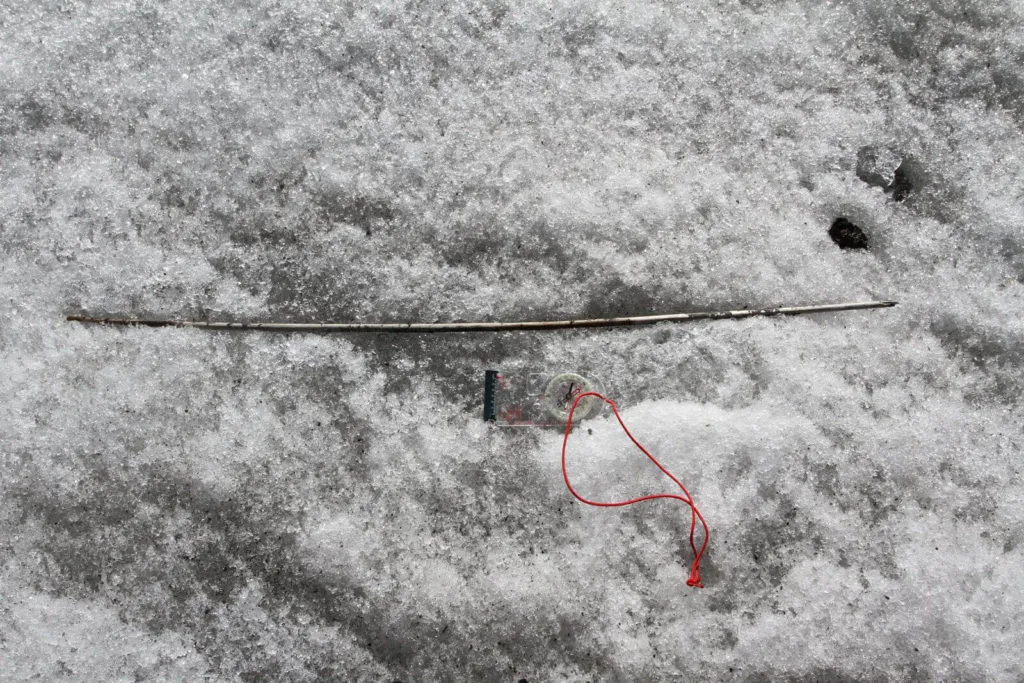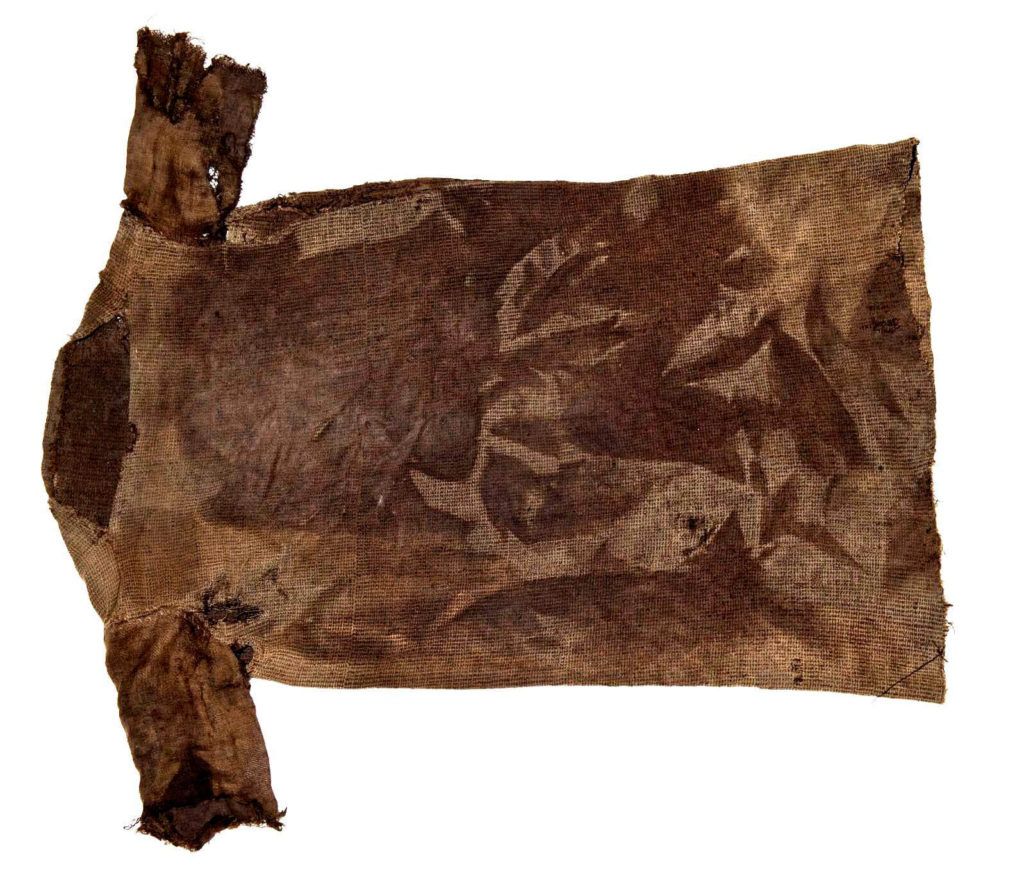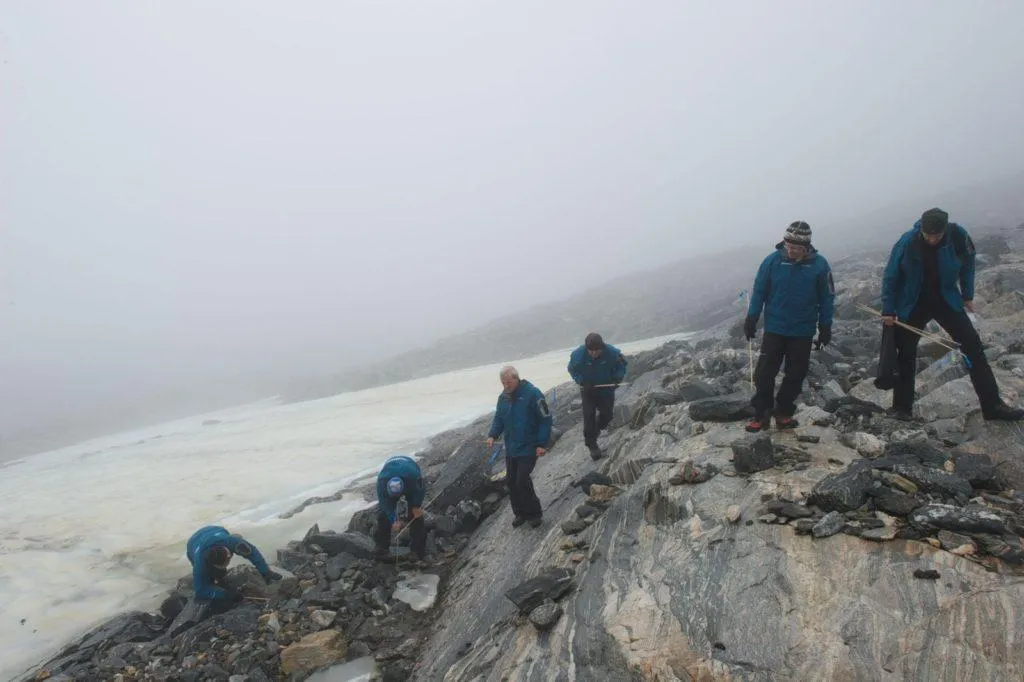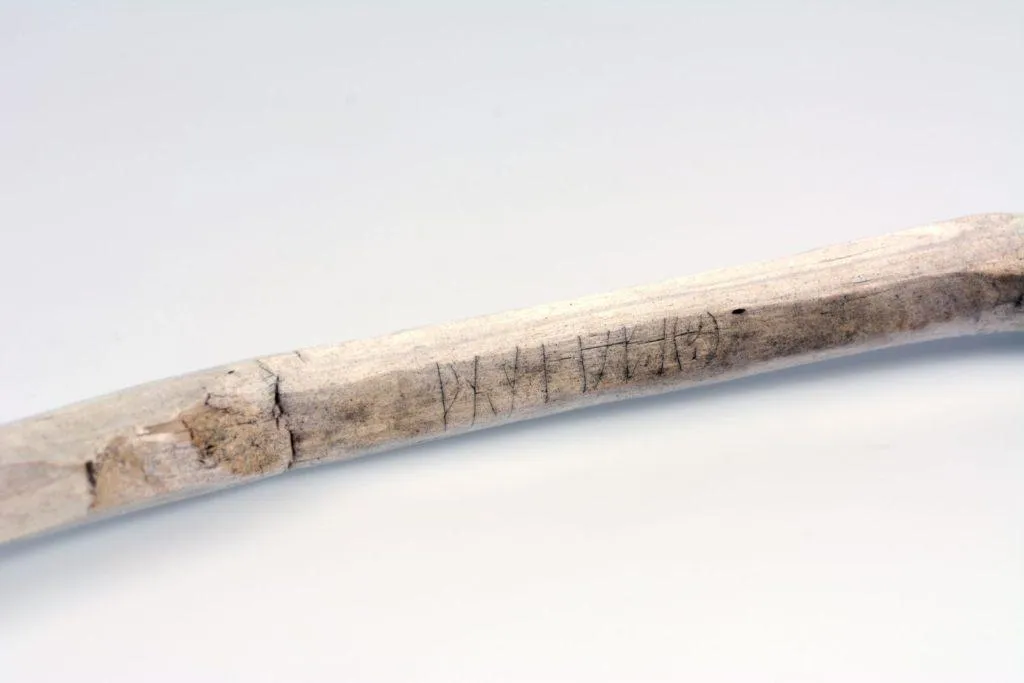Norway’s Melting Glaciers Release Over 2,000 Artifacts
Spanning 6,000 years, the well-preserved items hint at the history of mountain dwellers
There’s a reason history museums are packed with stone statues, pottery and arrow heads—these things resist decay while exposed to hundreds (or even thousands) of years in the sun, wind and rain. It's rare to find organic materials, like a woven shawl or a leather shoe, but there's at least one circumstance when these types of artifacts survive: when they're frozen in ice.
Glaciers and permafrost hold many of these treasures, but as climate changes they're releasing their haul to the elements. And as Kastalia Medrano at Newsweek reports, this is exactly what's happening in Norway. A group of glacial archaeologists have recovered over 2,000 artifacts from the edges of Norway's glaciers, and the find promises to help researchers better understand the history of mountain populations.
Archaeologists from the United Kingdom and Norway have surveyed the edges of glaciers in Norway’s highest mountains in Oppland since 2011 as part of the Glacier Archaeology Program and its Secrets of the Ice Project. They've uncovered thousands of objects that date as far back as 4,000 B.C., including wooden skis, near complete bronze-age arrows and wooden shafts, Viking swords, clothing and the skulls of pack horses.
"[In] the glaciated mountain passes, you can find basically anything," Lars Pilø, co-director of the Glacier Archaeology Program tells Medrano. “Obviously because of the fantastic artifacts there’s a lot of focus on the individual finds. But I think what is more important, perhaps, is the bigger picture."
Researchers have begun drawing conclusions from their extraordinary finds in a new article published in the journal Royal Society Open Science. Researchers were able to get ages for 153 of those thousands of objects, discovering that the recovered artifacts were not spread out evenly over time. Some eras saw a clustering of artifacts while others saw relatively few.
Upon closer examination, says senior author James H. Barrett of the University of Cambridge, some peaks in artifact numbers stood out immediately. “One such pattern which really surprised us was the possible increase in activity in the period known as the Late Antique Little Ice Age (c. 536 - 660 AD). This was a time of cooling; harvests may have failed and populations may have dropped,” he says. “Remarkably, though, the finds from the ice may have continued through this period, perhaps suggesting that the importance of mountain hunting (mainly for reindeer) increased to supplement failing agricultural harvests in times of low temperatures. Alternatively, any decline in high-elevation activity during the Late Antique Little Ice Age was so brief that we cannot observe it from the available evidence.”
Barrett says another spike in artifacts comes between the 8th and 10th centuries. That’s a period when the population of the area increased as did trade and mobility, eventually leading to the Viking Age when the peoples of Norway began expanding outward. The desire in rising urban centers for more mountain goods could have driven more hunters onto the ice.
As Pilø tells Elaina Zachos at National Geographic, the way reindeer were hunted also changed at this time. Instead of going after single animals with bow and arrow, hunters developed new techniques to herd and trap the animals. "We think that this type of intensive hunting … was unsustainable," Pilø says. "They were eradicating the reindeer."
After the 11th century, the number of artifacts drops off, perhaps caused by reduction in reindeer numbers. Brit Solli, of the Museum of Cultural History in Oslo says in a press release that the advent of bubonic plague in the 14th century could have later contributed to population declines as well as reduced the demand for mountain goods.
The team hopes to collect more artifacts and data points to further illuminate this poorly understood time in Scandinavian history. Glacier archaeology, Pilø tells Zachos, is quite different from traditional archaeology in which researchers spend months or years digging in one spot with trowels and brushes. Instead, they hike the glacier edge from mid-August to mid-September when the snow pack is at its lowest, walking the ice edge and marking artifacts with bamboo poles for later recovery. Getting the objects off the mountain quickly is key since they can begin to degrade.
Norway is not the only place where artifacts are emerging from the ice due to climate change. As Marissa Fessenden wrote for Smithsonian.com in 2015, bodies of soldiers lost during World War I have emerged from the Alps and Incan mummies have emerged from glaciers in the Andes. Melting permafrost in southwest Alaska has also released 2,500 artifacts, including woven baskets and wooden masks. Researchers even think Ötzi the iceman, the most famous glacier mummy, likely emerged due to the warming climate.
There are countless negative impacts of the changing climate, but the recovery of these artifacts could be an unexpected positive. Our uncertain climate future may inadvertently help researchers learn more about our past.




